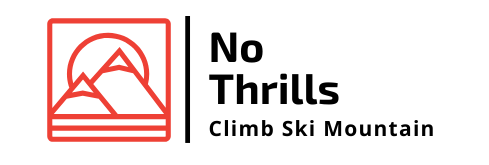The La Sportiva Skwama, a microfiber lined seude leather slip-lasted velco-slipper style shoe, with a highly downturned assymetric last, featuring a P3 tensioning rand system, soled with 3.5mm of Virbam XS Grip 2 rubber!
Climbing Shoes Jargon Buster
Espresso Note
Read Time - 2minute
Slipper Style - Slipper style shoes are simply slip on shoes without full velcro closure or lacing. Most slippers are softer than their velcro or lace up counterparts. Some slippers may incorporate a single velcro strap at the top, confusingly these are called velcro-slipper style shoes.
Unlined Leather - Exactly what it says on the tin. Seude leather pure and simple with no lining or reinforcement. Unlined shoes can stretch up to a full size or more. These are the kinds of shoes responsible for getting die all over your sweaty feet after a session.
Lined Leather - Leather which is reinforced with a synthetic material, usually microfiber to limit stretch. Sometimes this lining may just be in the toe area, other times it may be other the inside of the whole shoe. Lined shoes will typically stretch by half a size or so.
Synthetic - A full synthetic material construction. Synthetic shoes do not stretch much over their lifespan, although perforated synthetics will stretch more than unperforated synthetic shoes.
Slip Lasted - The vast majority of modern climbing shoes are slip lasted. Slip lasted shoes do not have an insole. Instead, the stiffness of the shoe comes from the midsole, a layer just above the rubber coated outersole.
Board Lasted - Climbing shoes with a stiffening insole, -weird right? Now reserved for a few specialist concept shoes with dedicated applications like the Boreal Ace.
Flat Lasted - A straight soled shoe. Unlike an asymmetric lasted shoe, the toe is not offset to the left or right from the heel. Common in comfort oriented shoes, like a La Sportiva Mythos or a Scarpa Helix.
Asymmetric Lasted - In an asymmetric lasted shoe, the toe is offset from the heel forming a curve. This allows for precise toe down footwork required for free climbing at a modern standard E-grades/5.10/6a etc and above. The degree to which the toe is offset varies from moderate to extreme, or aggressive, depending on the shoe and its intended use.
Downturn - This feature goes hand in hand with an asymmetric last. Downturned shoes are becoming increasingly common. This is in part a fashion trend and in part functionality. Even entry level shoes like the Scarpa Arpia are incorporating a degree of downturn. Downturned shoes are designs to have an active camber which points the toe of the shoe down and concentration force through the toe of the shoe.
Rand - The rand is the rubber which wraps around the outside of the shoe above the sticky rubber on the sole. Usually rand rubber is noticeably stiffer and firmer.
Tensioning Rand - The tensioning rand wraps around the heel of the shoe and back through the middle of the shoe providing tension to the shoe. Often this is easily identifiable as it is a different color to the rest of the shoe and/or has the brand’s name printed on it. La Sportiva call it the P3 system, and other brands assign their own names like ‘Slingshot’ to it.
Sticky Rubber - Nowadays all climbing shoes use sticky rubber. But some rubber is softer and therefore stickier than others. This is intentional, and soft rubber is not universally better than hard stiffer rubbers in all situations. Vibram identify their two rubber compounds by names which hint at their properties, XS Edge is harder than the softer but sticky XS Grip. Rubber is applied to shoes in varying thicknesses between 3mm and 4.5mm to add greater durability, sensitivity etc. as appropriate depending on the intended use of the shoe. Typically, softer rubbers are less durable than harder rubbers.
This article is an extract from our eBook ‘Bouldering Basics: A Handbook for Beginners’.
Learnt Something? Buy the No Thrills team a coffee to say thanks!

